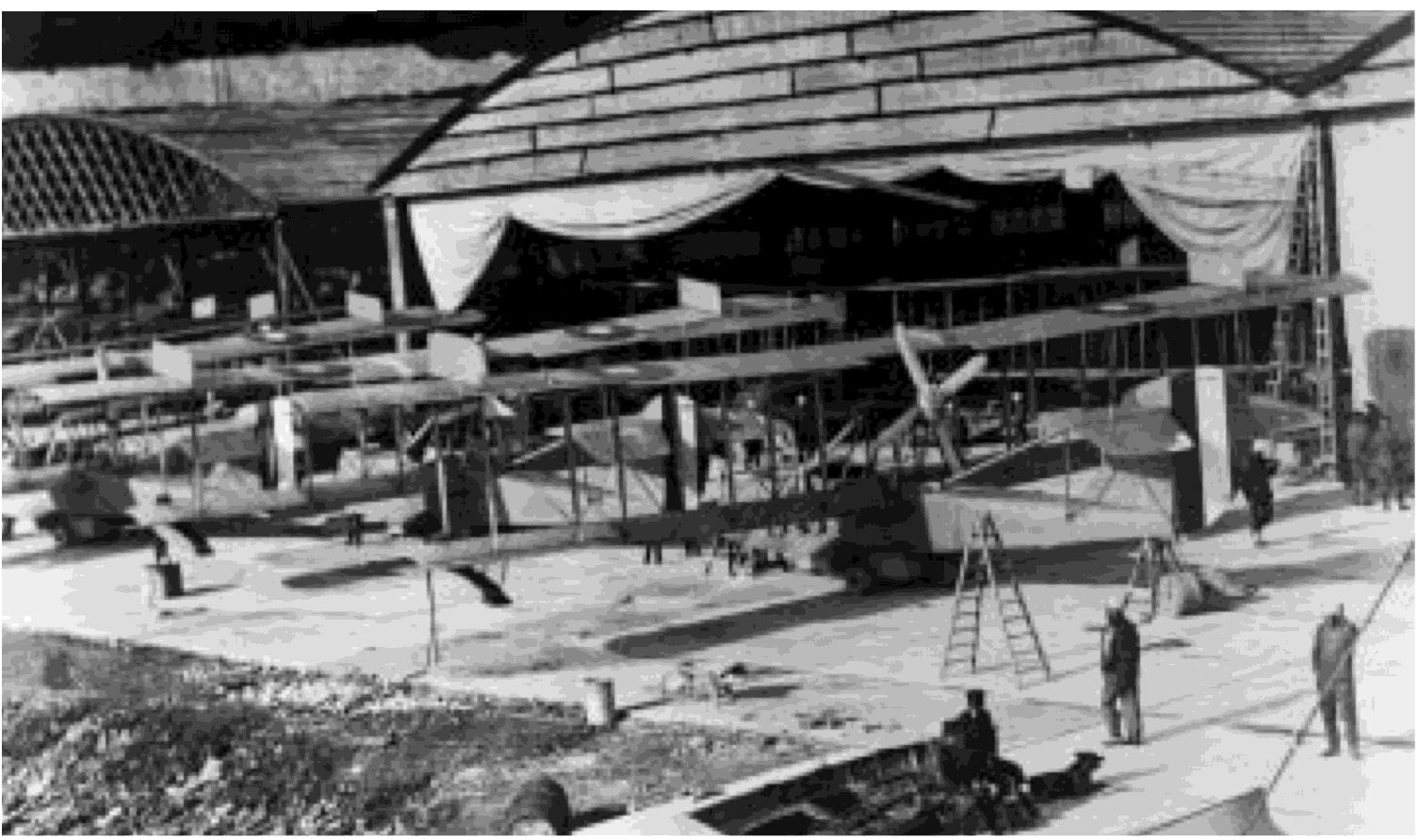
1918-Continued
soon as students on board were graduated; and that
six advanced training squadrons be organized there to
begin training patrol plane and night bomber pilots as
soon as practicable.
24 May
The first consignment of American-built fly-
ing boats, six HS-ls aboard
Houston
(AK 1) and two
aboard
Lake Placid
(a Navy cargo ship), arrived at
Pauillac, France.
13 June
The first American-built aircraft to be
assembled in France, an HS-l, made its first flight at
Pauillac, France, piloted by Lieutenant Charles P.
Mason, USN, with Commander James B. Patton,
USN, and Lieutenant William B. Jameson, USNRF, as
passengers.
19 June
NAS Pensacola, Fla., began taking upper
atmospheric weather soundings to provide information
on wind velocity and direction, needed for navigation-
al training flights. Recording instruments were carried
aloft by a kite balloon, a technique developed by the
station meteorological officer, Lieutenant W. F. Reed.
30 June
The first Navy pilots of the Night Wing,
Northern Bombing Group, to take special training with
British units, marked the completion of their course by
participating as observers in a night bombing raid by
Royal Air Force (RAF) Squadron 214.
1 July
An act of Congress repealed all laws relating
to the National Naval Volunteers (NNV) and autho-
rized the president to transfer as a class all its mem-
bers, in their confirmed ranks
and ratings, to the Naval
Reserve, the Naval Reserve
Flying Corps or the Marine
Corps Reserve.
7 July
The Naval Aircraft
Factory completed its first
order for 50 H-16 flying boats.
20 July
The RAF Station,
Killingholme, England, from
which U.S. Navy pilots had
been flying patrols since
February 1918, was turned
over to American forces and
established as a Naval Air
Station, Lieutenant Comman-
der Kenneth Whiting in com-
mand.
UNITED STATES NAVAL AVIATION
1910-1995
35
21 July
A surfaced German submarine, firing on a
tugboat and three barges three miles off Nauset Beach
on Cape Cod, Mass., was attacked by two seaplanes
from NAS Chatham, Mass. After firing on both aircraft,
the submarine submerged and escaped.
24 July
NAS Porto Corsini, Italy, the only U.S. Navy
seaplane patrol station established in Italy during
World War I, was placed in operating status,
Lieutenant Wallis B. Haviland commanding.
25 July
The Secretary of War approved a recommen-
dation by the Joint Army and Navy Airship Board, thus
completing an inter-service agreement which assigned
responsibility for the development of rigid airships to
the Navy.
27 July
The N-l, first experimental aircraft designed
and built at the Naval Aircraft Factory, made its fourth
successful flight and its first test of the Davis gun for
which it was designed. Lieutenant Victor Vernon pilot-
ed and Lieutenant Sheppard operated the gun which
gave what was reported as a very satisfactory perfor-
mance against a target moored in the Delaware River
near the factory.
30 July
Headquarters Company and Squadrons A, B,
and C of the First Marine Aviation Force arrived at
Brest, France, on board
DeKalb
(a Navy troop trans-
port). Upon disembarking, they proceeded to air-
dromes between Calais, France, and Dunkirk, France,
for operations as the Day Wing, Northern Bombing
Group. With the arrival, the squadrons were redesig-
nated 7,8, and 9 respectively.
HS flying boats at Naval Air Station Brest, one of two receiving and assembly plants established in
France
1053803
 |
13 |
 |